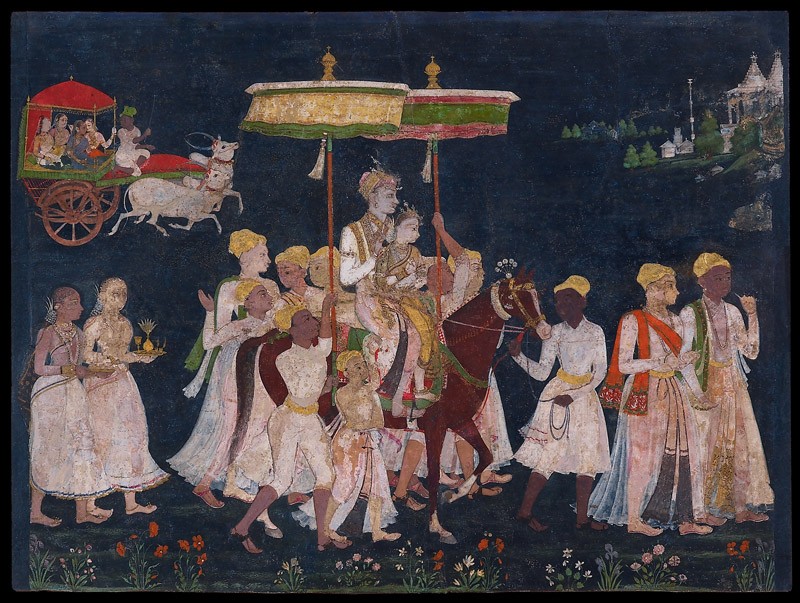Bhagmati on:
[Wikipedia]
[Google]
[Amazon]
 Bhagamati (Hyder Mahal), also known as Bhagyawati, was a queen of
Bhagamati (Hyder Mahal), also known as Bhagyawati, was a queen of
 Bhagamati (Hyder Mahal), also known as Bhagyawati, was a queen of
Bhagamati (Hyder Mahal), also known as Bhagyawati, was a queen of Sultan
Sultan (; ', ) is a position with several historical meanings. Originally, it was an Arabic abstract noun meaning "strength", "authority", "rulership", derived from the verbal noun ', meaning "authority" or "power". Later, it came to be use ...
Muhammad Quli Qutb Shah, in whose honour Hyderabad was supposedly named. The historicity
Historicity is the historical actuality of persons and events, meaning the quality of being part of history instead of being a historical myth, legend, or fiction. The historicity of a claim about the past is its factual status. Historicity deno ...
of her existence is debated among scholars.
Popular narrative
Bhagmati was born in 'Chichlam' (a location yet to be identified with certainty) to aHindu
Hindus (; ; also known as Sanātanīs) are people who religiously adhere to Hinduism, also known by its endonym Sanātana Dharma. Jeffery D. Long (2007), A Vision for Hinduism, IB Tauris, , pp. 35–37 Historically, the term has also be ...
family; she was a local nautch-girl. Qutb Shah met her whilst out for a ride, fell so deeply in love that he constructed the ''Purana Pul'' bridge to ensure he could meet with her regularly, and entered into a marriage. He founded a city at her birth-place and named it Bhaganagar or Bhāgyanagar in her honor. After she converted to Islam
Islam is an Abrahamic religions, Abrahamic monotheistic religion based on the Quran, and the teachings of Muhammad. Adherents of Islam are called Muslims, who are estimated to number Islam by country, 2 billion worldwide and are the world ...
and adopted the title ''Hyder Mahal'', the city was renamed Hyderabad
Hyderabad is the capital and largest city of the Indian state of Telangana. It occupies on the Deccan Plateau along the banks of the Musi River (India), Musi River, in the northern part of Southern India. With an average altitude of , much ...
.
Scholarly debates
That Purana pul was completed in 1578 after 2 years of construction; Qutb Shah (b:1566) was romancing Bhagmati as young as ten years. Furthermore, no tomb was built over her last remains unlike other leading female figures of the court; no inscription or coin of that period mentions her name. The chroniclers who mentioned of her were either from North of the Sultanate, who did not visit Hyderabad or foreigners, who arrived long after her death; contemporary Deccani sources including Qutb Shah himself don't mention of her at all. The conferral of 'Hyder', an immensely sacred Islamic attribute on a nautch-girl has been doubted as well. All these cast significant doubts on the authenticity of Bhagmati's existence. Some however assert that the historicity of multiple sources can't be rejected as hearsay due to their foreign nature, sources exist in that the State Museum in Public Gardens has a portrait of her commissioned around 1750, and that her conspicuous absence from Deccani sources were a result ofdamnatio memoriae
() is a modern Latin phrase meaning "condemnation of memory" or "damnation of memory", indicating that a person is to be excluded from official accounts. Depending on the extent, it can be a case of historical negationism. There are and have b ...
. Others believe Bhagnagar (which was indeed named after her) was a separate village which has nothing to do with today's Hyderabad.
References
* {{authority control Year of birth unknown Year of death unknown People from Hyderabad State Indian queens consort Qutb Shahi dynasty Telugu people 16th-century Indian women 16th-century Indian royalty Indian courtesans Indian female dancers